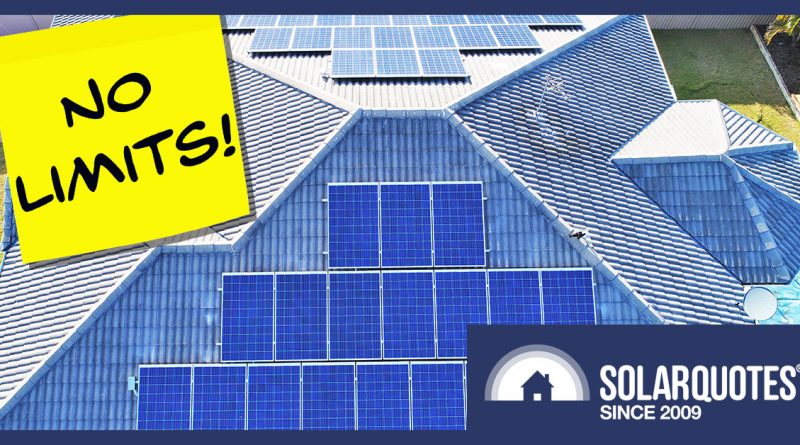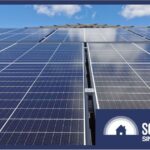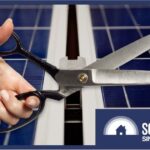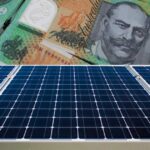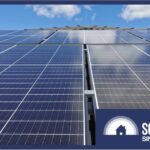Don’t Install A Smaller Solar System To Get A Higher Feed In Tariff. Here’s Why..
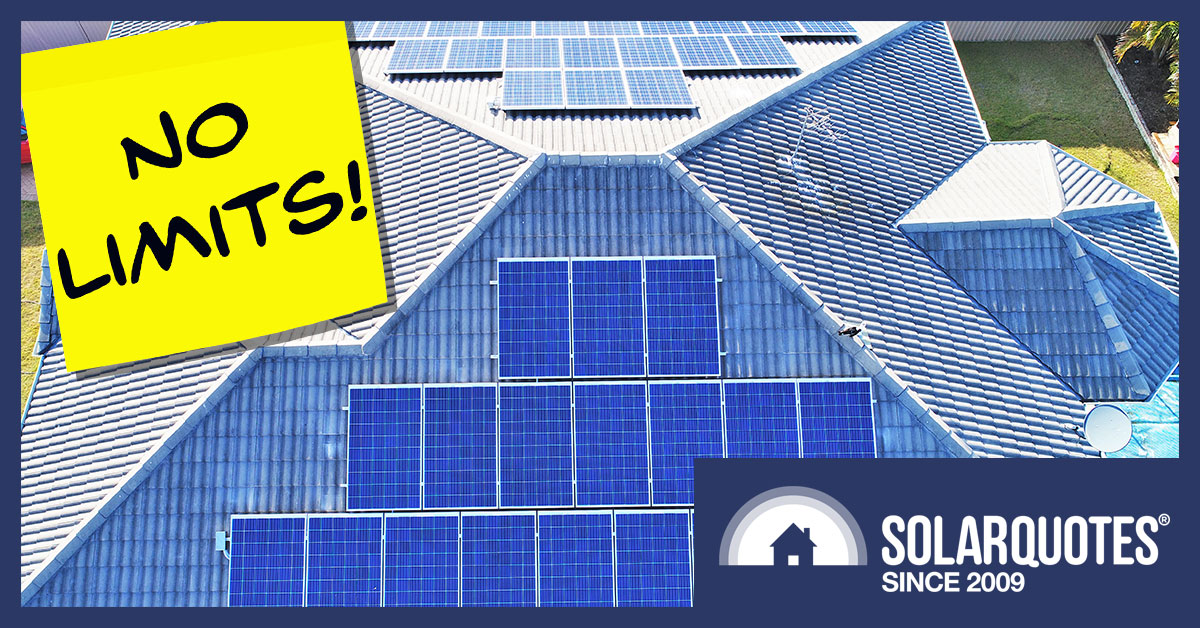

Finding a high feed-in tariff is becoming harder. Our feed-in-tariff comparison tool makes the job easier, but increasingly electricity retailers are putting system size limits on their most generous solar feed-in rates.
In South East Queensland, New South Wales, and South Australia, some retailers’ highest solar feed-in tariff is only available to systems below a certain size – typically 10 kilowatts. This may tempt you to install a smaller solar system than you might otherwise. I recommend against this because:
- You are likely to make more money with a larger solar system even if it receives a lower solar feed-in tariff.
- Retailers can change their tariffs at any time. Once your contract is over, you can lose your higher feed-in tariff and be stuck with a smaller system.
And most importantly:
- Larger solar power systems are better for the environment.
At this point, the typical Australian homeowner is thinking,
“Ronald, helping the environment is nice – but show me the money!”
I hear you. Now I’ve mentioned the most important factor, I’ll discuss money for the rest of the article.
SE QLD Has Most Competitive Size-Limited Plan
A retailer solar size limit is simply a maximum size your solar power system can be in order to use a particular retail plan. You are under no requirement or obligation to meet this size limit, unlike the connection rules for your location, which you must follow1.
How size limited plans compare to plans without restrictions on solar system capacity varies by state:
SA: I’ve found three retailers offering plans with size limits, but their feed-in tariffs and charges aren’t better than competitor plans without limits, so if you’re interested in maximizing savings, I see no point in worrying about them.
NSW: The highest feed-in tariff offered by a size-limited plan is from AGL and is 0.4 cents more than the highest unlimited competitor plan I’ve found. This under half a cent difference isn’t a strong incentive to even consider installing a system within it.
South East QLD: One retailer, AGL, offers a size limited plan with a feed-in tariff one full cent more than the highest competitor without a size limit.
Some may consider the slightly higher feed-in tariff available in NSW makes it worth getting a smaller solar system, but I wouldn’t worry about it. While there can be a small benefit to removing a panel or two from the design, I don’t recommend basing decisions on a tariff that the retailer could change at any time.
This leaves South East Queensland as the only location where a reasonable case can be made to slightly reduce the size of the solar system’s design to get a higher feed-in tariff. But even there, I don’t recommend it. One reason is the higher feed-in tariff only exists at the whim of the retailer, but also because:
- The cost per watt of solar power systems usually decreases with size, increasing the financial benefit from a larger system.
- Larger solar systems help future-proof your home for when you decide to get a battery or an electric car or two.
But I’ll go through the numbers with an example household, and you can make your own decision.
System Size Limits Have Grown
The smallest limit I know of is currently 10 kilowatts of total solar panel capacity from AGL’s size limited plans. In the past, there were plans with a size limit of 5 kilowatts of inverter capacity and 6.66 kilowatts of panels, but they appear to have disappeared.
Because the average size of new solar systems has increased, this low limit probably cost retailers too many customers. Because the average size of solar systems is still rising, this makes me think current size limits may not last long before they either increase or disappear entirely.
Grid Connection Rules
How much solar power you can install depends on the grid connection rules for your location, and these depend on if a property has single or three-phase power. In South East Queensland, households can usually install…
- Single-phase: Up to 10 kilowatts of inverter capacity and 13.33 kilowatts of panel capacity, with a 5 kilowatt export limit.
- Three-phase: Up to 30 kilowatts of inverter capacity and 40 kilowatts of panel capacity, with a 15 kilowatt export limit.
I won’t go into export limiting here. However, it can still make sense for a household with single-phase power and a 5 kilowatt export limit to install over 10 kilowatts of solar panels. In comparison, a home with three-phase power and a 15 kilowatt export limit can usually install over 25 kilowatts of panels — more than will fit on most roofs — without export limiting being an issue.
In this article, I’ll assume a household always has enough roof space to fit a system larger than a retailer’s size limit and export limits aren’t considered. Generally, this will mean the home has three-phase power, but it’s not a necessity.
South East QLD Size Limited Retail Plans
The SolarQuotes Electricity Retailer Comparison tool is great for finding electricity plans likely to provide the most benefit for solar households. Unfortunately, it doesn’t handle time-of-use or demand tariffs yet, so you may want to use it in conjunction with the government Energy Made Easy site. But this doesn’t do a good job — or really any job — of showing the best options for solar households. If you find a plan you think you’d like on Energy Made Easy, I recommend also going to the retailer’s site to see if they offer anything better.
In South East Queensland, I found three retailers offering size limited plans:
AGL: A size limit of 10 kilowatts of solar panel capacity with a 12 cent solar feed-in tariff. This was the highest feed-in tariff I could find in the state and is one cent higher than anything offered by a competitor without a solar system size limit.
Discover Energy: A 10 cent solar feed-in tariff with a limit of 10 kilowatts of inverter capacity and 13.3 kilowatts of solar panel capacity.2.
Momentum Energy: A 10 cent solar feed-in tariff with a limit of 10 kilowatts of inverter capacity3.
If the goal is to maximize savings on electricity bills, then — at the time of writing — only the AGL plan needs to be considered as there are plans without size limits superior to what Discover and Momentum offer.
NSW Size Limited Retail Plans
NSW has AGL and Momentum plans with the same size limits and feed-in tariffs as South East Queensland. AGL’s size-limited feed-in tariff of 12 cents is the highest available and is 0.4 cents higher than the closest, non-sized limited, competing plan.
Finding The Best Solar Plan
Determining the best electricity plan isn’t easy. With a time-of-use tariff, it can depend on when grid electricity is consumed, and if you’re unfortunate enough to have a demand tariff, then drawing too much grid power just once at the wrong time can cause you to be hit with a hefty demand charge for the whole month. Daily supply charges also need to be considered.
Finding the best retailer has intentionally been made difficult. On top of this, plans can change. In a year’s time, what’s on offer could be quite different.
I’ll give an example below showing why installing a smaller solar power system to get a one-cent higher feed-in tariff usually isn’t a good idea. You will have to make your own allowances for the other components of electricity bills other than solar feed-in tariffs. But these often don’t amount to much. A half a cent difference in per kilowatt-hour charges for a solar household that consumes 3,000 kilowatt-hours of grid electricity annually comes to a difference of only $15 per year.
An Example
If you were planning to install an 11 kilowatt solar system but saw you could get a one-cent higher solar feed-in tariff by installing a 10 kilowatt solar power system, would it make sense — all else equal — to go with the smaller system?
The answer to that is probably not, but some may still decide it’s worthwhile.
To show why it’s not likely to be a good idea, I’ll use the example of a household faced with a choice between installing…
- A 10 kilowatt solar system for $10,000 that will produce 14,000 kilowatt-hours a year with a 12 cent feed-in tariff.
- An 11 kilowatt solar system for $10,800 that will produce 15,400 kilowatt-hours a year with an 11 cent feed-in tariff.
Systems in Brisbane of these sizes will generally have no problem providing this much annual output, while in Sydney, it’s possible to obtain this output with north-facing solar panels.
Larger Solar Systems — Usually — Have A Lower Cost Per Watt
I’ll assume the 10 kilowatt system will cost $10,000. It is possible to get a well-installed system with reliable hardware for less than this, but paying slightly more can get you higher quality panels, and $10,000 is a nice round figure.
This comes to $1,000 per kilowatt, but I’ve assumed the 11 kilowatt system will only cost $800 more. This is because solar systems usually become cheaper per kilowatt the larger they are. This isn’t always the case. With some awkward roofs fitting extra solar panels can involve a lot of extra work and increase the cost, but I’ll assume this isn’t a problem for my example home.
All Else Equal
For easy comparison between the two feed-in tariffs, I will assume the following will remain the same whether the home gets a 10 or an 11 kilowatt solar system…
- The home consumes an average of 14 kilowatt-hours a day from both the grid and solar power. This is a typical amount for a two-person household.
- The home pays an average of 24 cents per kilowatt-hour for grid electricity.4
Solar Energy Self Consumption
A home with a 10 kilowatt solar system will typically self consume around 14% of its electricity. But this percentage will decline with increasing solar system size, so I’ll use 13.5% self-consumption for the larger system. This will come to:
- The 10 kilowatt solar system with 14% self-consumption will have 1,960 kilowatt-hours of solar energy self-consumption.
- The 11 kilowatt solar system with 13.5% self-consumption will have 2,079 kilowatt-hours of solar self-consumption.
Annual Savings
Using the above assumptions, over a year, the amount of savings for each system size will come to:
- 10 kilowatt solar power system: $1,915
- 11 kilowatt solar system: $1,964
So in this situation, where lower self-consumption is accounted for, and all else is equal, a home will save more per year by installing one extra kilowatt of panels and accepting a 1 cent lower solar feed-in tariff.
For the household to save less per year with the lower feed-in tariff, the solar system would have to be 10.7 kilowatts or smaller.
Long Term Savings
Just looking at the annual savings overlooks the fact the 11 kilowatt system costs $800 more. As the household will only be $49 a year better off, it would take over 16 years to pay this extra cost.
But I don’t think that’s the right way to look at it.
Solar systems can last for decades, but a retailer can change their plans at any time. While you may have a contract, as soon as it’s over any feed-in tariff advantage from having a smaller system can disappear. Once it’s gone — all else equal — the household will be $169 worse off each year. At that rate, it would only take under 5 years for the larger, 11 kilowatt solar system to pay for itself.
Additionally, having just one solar panel more will make a household a little better off if they do something to increase self-consumption, such as getting a home battery or an electric car.
But if the one-cent higher solar feed-in tariff did last long term and the example household installed a 12 kilowatt solar system for $11,600, then, with a solar energy self-consumption percentage of 13%, it would come out ahead after 7.4 years. So a solar system only has to be 2 kilowatts larger to come out ahead within a reasonable period of time with a one-cent lower feed-in tariff.
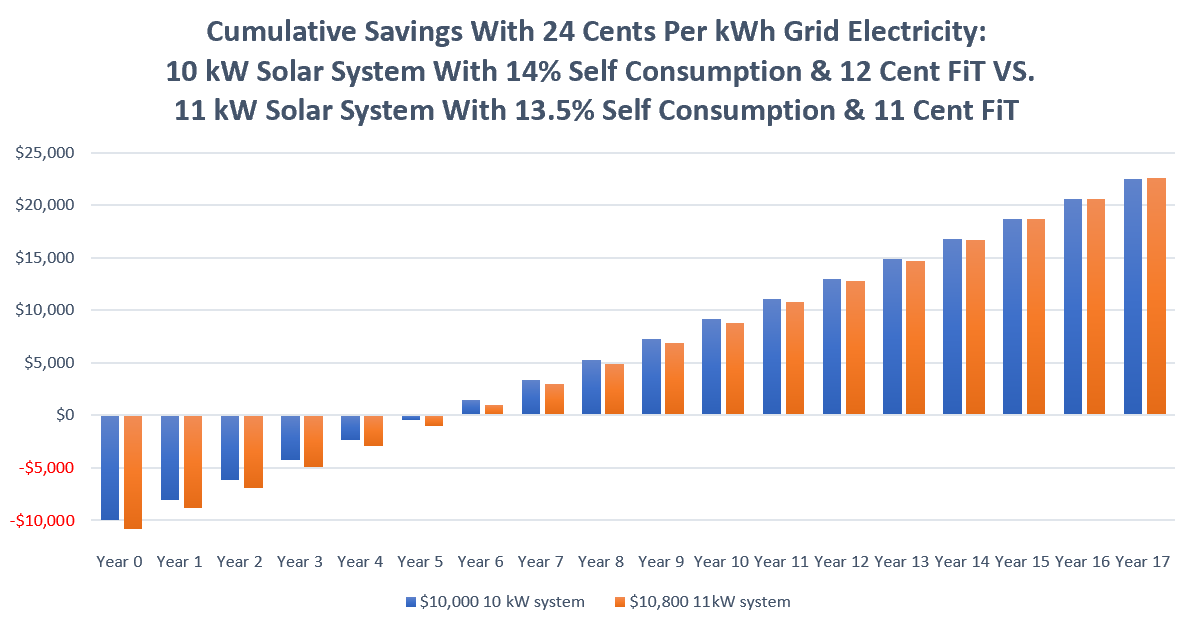
This graph shows the cumulative savings from installing a 10 kilowatt solar system in Brisbane and receiving a 12 cent solar feed-in tariff compared to installing a slightly larger 11 kilowatt solar system and only receiving an 11 cents solar feed-in tariff. I don’t think you can rely on the higher feed-in tariff lasting more than a few years, but if it did last, with a 24 cent grid electricity price, the 11 kilowatt solar system will pull ahead on cumulative savings after 16 years.
My Rule Of Thumb Advice
Because retailers can change their offers at any time, I think there is a good chance size limits will either increase or disappear over the next few years. So my general advice is to install as much solar power as will reasonably fit on your roof. If you are in South East Queensland and removing a solar panel or two from the system design will give a higher feed-in tariff, then you can roll the dice and hope it lasts long enough for it to be worthwhile. But unless you are a gambler who is hell-bent on pursuing every possible little advantage, I’d say don’t worry about it.
If offers change and you can get an extra two-cents on your feed-in tariff, your benefit will increase in the short term, but I think it would be even less likely to last long term. While it’s more worthy of consideration than a one-cent benefit, my advice would still be to not worry about it and just install as much solar power as you can. You’ll be helping the environment more, future-proofing your home and most likely locking in bigger savings over the long term.
Footnotes
- Normally connection rules don’t affect your feed-in tariff, but in WA, homes with three-phase power are allowed to install more than 5 kilowatts of inverter capacity but will receive no solar feed-in tariff if they do.
- I think it’s likely this limit is actually 13.333 kilowatts of panel capacity.
- The terms and conditions for the plan state, “the Electricity Generation Facility must have an installed or name-plate generating capacity of 10 kilowatts or less.” I contacted Momentum to confirm this meant 10 kilowatts of inverter capacity, and they… (If this sentence has been left hanging, it means they didn’t get back to me.)
- This is slightly higher than what it’s currently necessary to pay in QLD, but I’m expecting electricity prices to increase in July due to a stronger economy.
Original Source: https://www.solarquotes.com.au/blog/small-solar-higher-tariff/

